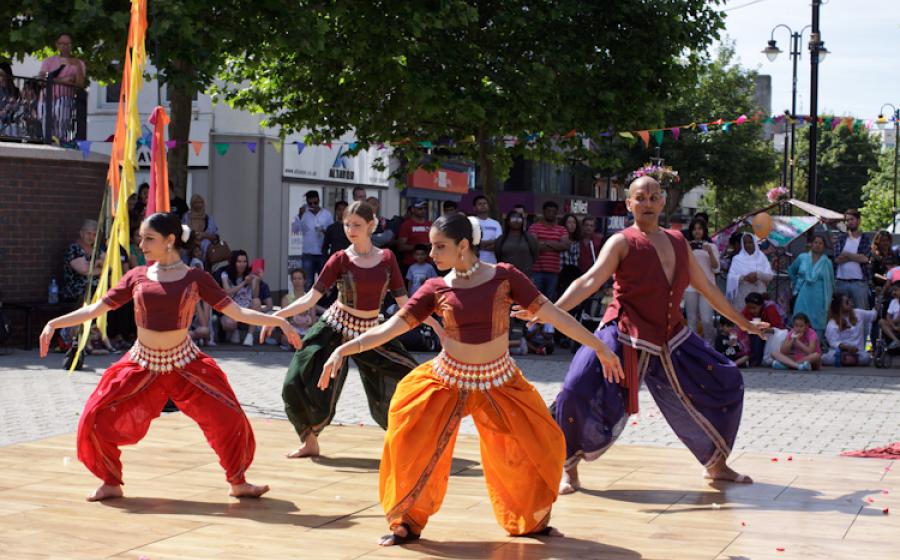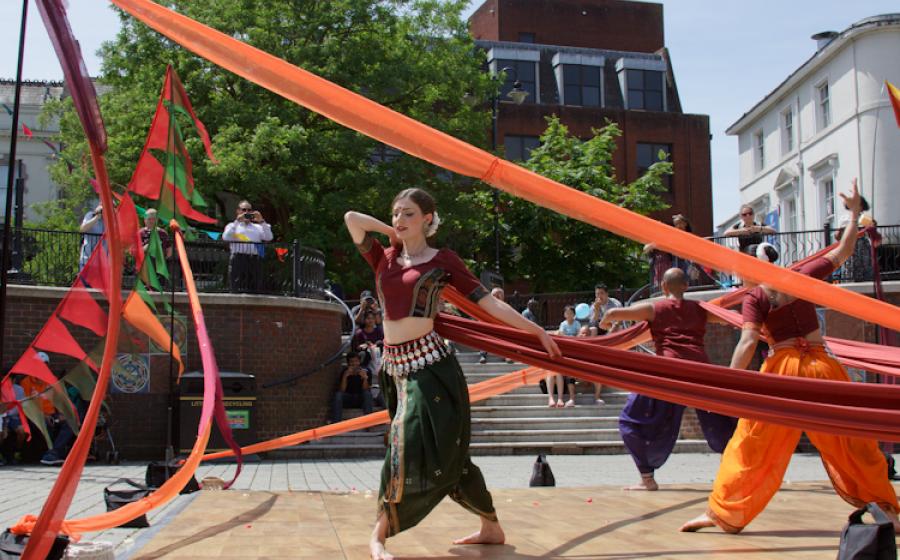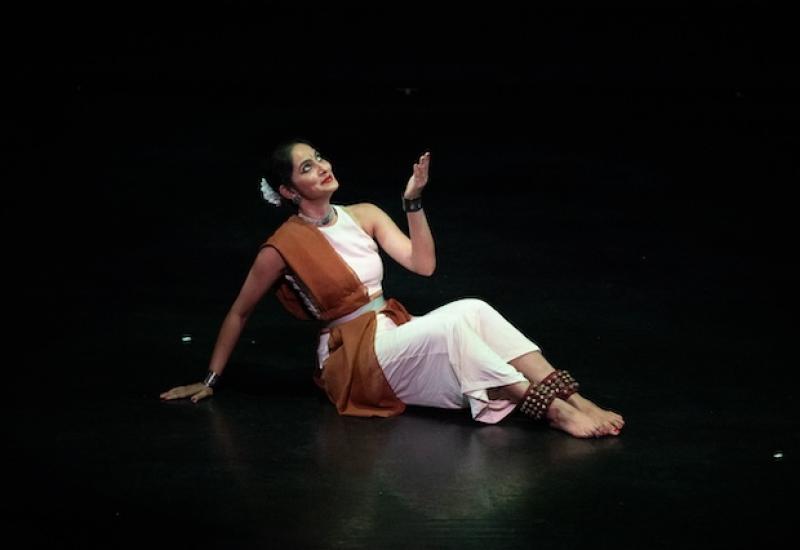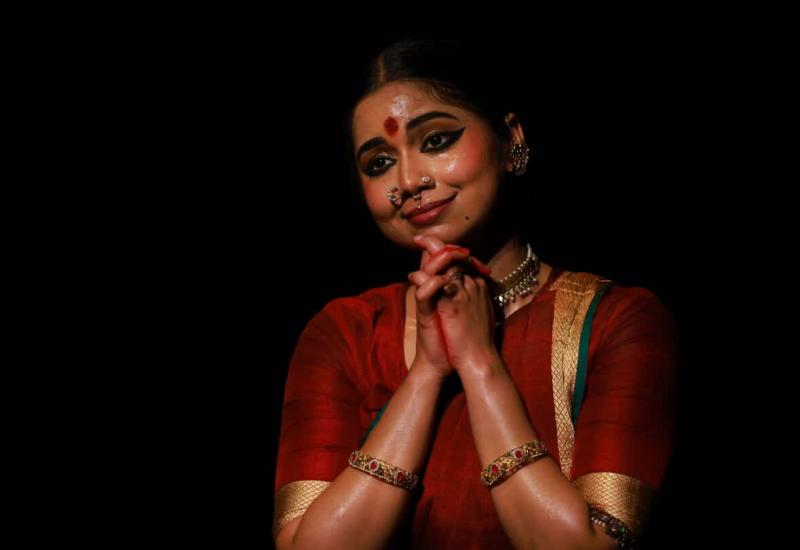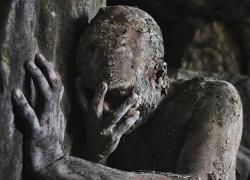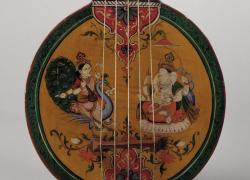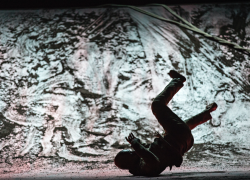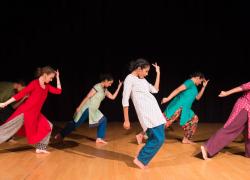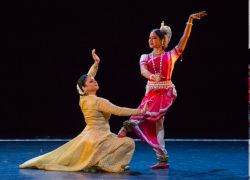Sacred Shapes
Sacred Shapes by Katie Ryan for The Odissi Ensemble
Reviewed by Donald Hutera at Imagine Luton on June 24, 2018
The 250th anniversary of the invention of circus performance was one of the strongest USPs of Imagine Luton, but it wasn’t the only performance style on offer at this free, two-day outdoor (mainly, despite the presence of a big top) arts festival sprinkled across various sites throughout town. For the record, six of the items on offer were conceived of as peripatetic pieces that unwitting punters might encounter as they went about their business on the streets of Luton. As an outsider visiting Luton for just a few hours on a gloriously sunny and warm Sunday afternoon, it was obvious what an injection of colour and energy a culture-based festival like this can supply any city centre able and willing to host it.
I had a grand time watching three short shows back-to-back, all of them presented on adjacent sites on a partially tree-covered (a valuable asset when the sun is blazing down) plaza known as Market Hill. The centrepiece of my triple bill, and what lured me to Luton in the first place, was a new work created for The Odissi Ensemble by founding member Katie Ryan. This also happened to be her choreographic debut. Conceptually Ryan’s starting point was the mandala, the familiar geometric pattern which in both Hinduism and Buddhism represents the cosmos. Perhaps is its very familiarity which makes the mandala such a rich graphic symbol upon which to fashion a dance.
Market Hill was, not coincidentally, an ideal location for the work to receive its premiere especially given that one of the definitions of mandala is ‘a circle enclosing a square with a deity on each side.’ In Luton the performance area was defined by a square floor from which an anchored line of coloured pennants fluttered at each corner. This square was, in turn, enclosed by the circular architecture of a plaza set at the apex of an incline of the pedestrian street, and partially sunken, but rendered viewable either at its own level or from above thanks to raised terraces. It was simple but elegant, and perfect.
The performance was a quartet for which the lithe and willowy Ryan was joined by Elena Catalano (petite and compact), Kali Chandrasegaram (towering but graceful) and Khavita Kaur (grounded and forceful). As my choice of adjectives indicates, these are experienced dancers of pleasingly differentiated physicality and personality. The dance itself, gently broken down into six pretty seamless sections, unfolded as a ceremony that began with the strewing of petals as a means of blessing the space. The shapes and steps that ensued for a half hour or so, always rendered with skill and expression, had the dancers weaving their way through an abstract journey of discovery that could be interpreted as aspects of the spirit manifest as flesh and blood. There was some unison, occasional punctuating spins, leaps and lifts, gradations of speed and judicious use of gesture, all of it set to a palatable score (by Ranjana Ghatak) of percussion (Gurdain Rayatt), vocals (Ghatak) and spoken rhythm (Parvati Rajamani).
This was dance about form rather than narrative and, what’s more, form designed to be both relatively complex yet easily discerned. I would need to see Ryan’s work again to better grasp its structure and, in truth, would welcome that opportunity. I was, however, favourably distracted. One of the things I most enjoyed on this initial viewing was roving about the plaza as the piece played out, watching it from different angles while also observing others watching it as well. Such freedom is, for me, among the chief boons of outdoor performance: being liberated from the confinement of a seat, and the ‘them and us’ set-up of conventional theatre, plus the greater awareness of being part of an audience that such liberation can bring.
Classical Indian dance isn’t commonly presented on the outdoor arts circuit, and even less so at a relatively smaller-scale as was the case here. Ryan and her collaborators did a creditable job. What I appreciated about ‘Sacred Shapes’ was its refinement, accessibility, freshness and spark. And, to put the show in context, how delightful to be able to see it as the filling in a performance ‘sandwich’ that began with Tangled Feet’s ‘That Parking Show,’ an inventive and surprisingly touching, automobile-based slapstick comedy of conflict resolution, and ended with ‘Block,’ an ambitious and booming merger of dance and circus by No Fit State Circus and Motionhouse that featured a few dozen moveable and stackable pillars used as a springboard for heroically risky feats of daring.
(Please be aware of a possible conflict of interest since Kadam are the publishers of Pulse as well as producers of Sacred Shapes. The reviewer is independent, but was commissioned and paid by Kadam/Pulse.)

